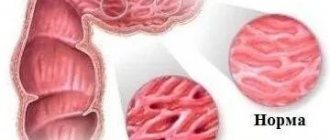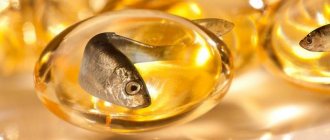Suprastin is perhaps the most famous anti-allergy drug.
A classic antihistamine with a pronounced antiallergic effect. This is a representative of the first generation of the group of antihistamines whose action is rapid, but not long-term. This is precisely what determines its relevance to this day as an emergency aid for lightning-fast allergic reactions and allergic shock. And even with the presence of a huge number of modern representatives of allergy medicine on pharmacy shelves, Suprastin continues to be present in our medicine cabinets to this day.
Composition and release form
The drug is available in several forms: tablets and solution for parenteral administration.
The tablets are white or slightly gray in color, round in shape. There is little or no odor. Packed in cardboard packaging with 2 blisters, each containing 10 pieces.
Water-based solution, colorless with a specific odor. Available in ampoules of 1 ml.
The active component of the product is chloropyramine hydrochloride. Excipients: talc, starch, stearic acid, lactose, gelatin and purified water.
Contraindications
Taking Suprastin is contraindicated in the following conditions:
- acute attacks of bronchial asthma;
- stomach ulcer;
- angle-closure glaucoma;
- treatment with MAO inhibitors;
- arrhythmia;
- acute myocardial infarction;
- prostate hyperplasia;
- urinary retention;
- hypersensitivity to ethylenediamine derivatives;
- allergy to the active or excipients of the drug;
- pregnancy and lactation;
- age up to 3 years;
- Administration of the solution to newborns and premature infants is contraindicated.
pharmachologic effect
Suprastin belongs to the first generation antiallergic drugs. It has a clear antihistamine and weak sedative effect. Helps relieve itching, burning, hyperemia and other local and systemic signs of allergies.
The mechanism of action of the main component helps to suppress histamine receptors, thereby preventing the allergic process.
After internal administration, rapid absorption of the drug is observed. The therapeutic effect occurs within 15-30 minutes. The maximum effect is observed after an hour and lasts up to 6 hours.
Suprastin for pregnant women
Suprastin during pregnancy
Suprastin is not used for the treatment of pregnant women and mothers during breastfeeding. Such caution is dictated by the lack of reliable and complete clinical studies on the effect of the drug on pregnant women, as well as on women and children during breastfeeding. However, there is evidence, not statistically confirmed in clinical settings, that when Suprastin is taken in the last two weeks of pregnancy, the fetus develops connective tissue located behind the lens of the eye. Judging by the annotation, taking Suprastin in the 1st trimester, during the 2nd and in the last weeks of the 3rd trimester is prescribed exclusively by the attending physician after assessing the risks to the fetus and the expected benefits to the mother.
Why is Suprastin prescribed?
The drug is used to treat:
- Quincke's edema.
- Anaphylactic shock.
- Allergic conditions of various origins (to food, insect bites, medicines).
- Serum pathology.
- Conjunctivitis.
- Allergy symptoms to relieve local hyperemia, itching, swelling, inflammation.
Suprastin is also often prescribed for diseases of the ENT organs to reduce swelling of the mucous membrane.
How to take Suprastin (tablets and ampoules)
Suprastin tablets are taken orally during meals, not chewed or crushed, with a sufficient amount of liquid. The daily dose of the drug is 75-100 mg. If no side effects are detected during administration, then, on the recommendation of the attending physician, the dose can be increased, but should not exceed 2 mg/kg body weight.
Children are prescribed Suprastin not only for allergic reactions, but also for chickenpox, since the drug can reduce the intensity of itching. Suprastin is prescribed to children from the age of 3 (tablet form), and injections, as prescribed by a doctor, can be given when the baby is 1 month old.
How to take Suprastin tablets correctly
So, if you follow the instructions for use of Suprastin, then the dosage is as follows:
- children aged 3-6 years: ½ pcs. (12.5 mg) 2 times a day;
- children aged 6-14 years: ½ pcs. (12.5 mg) 2–3 times a day;
- children over 14 years old and adult patients: 1 pc. (25 mg) 3–4 times a day;
Suprastin in ampoules.
The solution is administered intramuscularly (IM) or, in severe conditions and emergencies, intravenously (IV). Suprastin injections can only be given by a nurse or doctor.
Recommended initial doses of Suprastin for children:
- 1-12 months: ¼ ampoule (0.25 ml) IM;
- 1-6 years: ½ ampoule (0.5 ml) IM;
- 6-14 years: ½-1 ampoule (0.5-1 ml) IM.
- children over 14 years of age and adult patients: 1-2 ampoules (1-2 ml) IM.
In acute severe conditions or anaphylactic shock, therapy begins with the slow administration of Suprastin intravenously.
The duration of the course is determined by the doctor and depends on the symptoms and clinical course of the disease. On average, the course is 5-7 days. It is prescribed for acute disease. When a stable therapeutic effect is achieved, treatment is stopped.
It is worth noting that with prolonged use of Suprastin, patients may become accustomed to the drug.
Side effects
As a result of non-compliance with the course duration and therapeutic dose of Suprastin, side effects may develop:
- Dizziness, headache of varying intensity.
- Insomnia, drowsiness.
- Heart rhythm disturbances.
- Dyspeptic disorders in the form of nausea, vomiting, poor appetite and abdominal pain.
- Possible urinary retention.
- Allergic manifestations - skin rashes, itching, burning, and sometimes hyperemia.
Analogs
Synonyms of Suprastin (containing the same active ingredient) are Chlorpyramin, Chlorpyramin-Ferein, Chlorpyramin-Eskom.
Suprastin's analogs
Medicines with a similar therapeutic effect: Histafen, Diazolin, Kestin, Ketotifen, Clarotadine, Lomilan, Loratadine, Suprastinex, Erius.
Analogs in effect cannot always ideally replace the drug chosen by the doctor, so replacement is possible only after consultation.
Suprastin/Tavegil
The active component of Tavegil is clemastine. Tavegil is characterized by high efficiency. The mechanism of action and the resulting effect from the drugs are similar.
Suprastin/Cetrin
Cetrin is intended for adults and children over 6 years of age, and in syrup form for children over 2 years of age. Cetrin penetrates perfectly into the skin, so allergic reactions that manifest themselves in this way are stopped quite quickly.
This drug has a less pronounced manifestation of the body's negative reaction to administration. Suprastin, unlike Cetrin, is considered a more effective drug.
Suprastin/Zyrtec
Zyrtec is a generic version of Cetrin, as it contains the same substance - cetirizine.
Suprastin/Diazolin
The active ingredient of Diazolin is mebhydrolintac. It is weaker than Suprastin and is characterized by less sedative effect.
Suprastin/Zodak
Zodak basically contains cetirizine dihydrochloride. There is no sedative effect. Zodak, compared to Suprastin, is weaker, but the effect of taking it lasts longer. Suprastin eliminates allergic reactions faster and is applicable for severe conditions.
Suprastin/Loratadine
Loratadine does not have a sedative effect and does not enhance the effects of alcohol.
Suprastin/Claritin
The active ingredient in Claritin is loratadine. The characteristics of the main drug (Loratadine) are the same.
When choosing a particular drug, be sure to consult your doctor.
Can Suprastin be used for children?
The medicine can be given to children from 3 years of age. The absolute indications for use are:
- Allergic reactions to insect bites, certain foods and medications.
- Eczema.
- Toxidermy.
- Chicken pox.
- Hives.
The use of Suprastin allows you to relieve itching, hyperemia, swelling of tissues, skin rashes, helping to improve the overall well-being of the child.
It is forbidden to give the product to children with bronchial asthma or allergies to chloropyramine. There are also other contraindications, so the medicine should be used only as prescribed by a doctor.
Composition of the medicine
Suprastin, or rather its active substance, is a blocker of H-histamine receptors. This pharmacological group and, accordingly, medications related to it have an anti-allergic effect and are used to reduce or completely eliminate severe allergic reactions to a particular irritant.
Allergies can occur due to animals
The main component of Suprastin - chloropyramine - is included in the list of vital and essential drugs (vital and essential drugs), which is approved by the Government of the Russian Federation for the purpose of state regulation of prices for drugs.
Chloropyramine blocks H-histamine receptors. What does it mean? As soon as chloropyramine exerts its inhibitory effect on the receptors, they become immune to histamine, which in turn triggers the body’s reaction, which we used to call allergies. Also, chloropyramine partially blocks M-cholinergic receptors, after which an antiemetic and antispasmodic effect is observed.
Chloropyramine from the intestinal lumen, where it enters after administration, is quickly absorbed into the systemic circulation. After this, it enters the central nervous system, evenly distributed in the tissues.
Suprastin helps not only against allergies, but also has a calming, hypnotic, and antipruritic effect. Increases capillary permeability and relieves spasm from smooth muscles.
Is it possible to combine Suprastin and alcohol?
Taking medicine together with alcohol is strictly prohibited. Since Suprastin is a 1st generation drug with pronounced hypnotic, sedative, and anticholinergic properties, which are enhanced by the influence of alcoholic beverages.
When combining alcohol with pills or an injection, the following may occur:
- Dyspeptic symptoms.
- Dizziness.
- Impaired vision clarity.
- Feeling of euphoria.
- Panic, anxious feelings.
- Abnormal stool.
- Cardiovascular system disorder.
- Lethargy.
- Tremor.
Interaction with alcohol
Suprastin is contraindicated to take with alcoholic beverages
Suprastin should not be taken with alcohol. The sedative and hypnotic effect, which is observed when taking Suprastin, increases when mixed with alcohol-containing drinks. Also, such a “cocktail” can provoke:
- dizziness;
- blurred vision;
- a state close to panic;
- nervous excitability;
- dry mouth;
- euphoria;
- unstable stool;
- nausea;
- convulsions;
- vomit;
- tremor;
- tachycardia;
- ocular hypertension;
- a sharp drop in blood pressure;
- arrhythmia;
- urinary retention;
- lethargy;
- drowsiness.
Special recommendations.
Elderly patients, as well as those with impaired liver and/or kidney function, cardiovascular system, angle-closure glaucoma, urinary retention, prostatic hyperplasia, should take the drug with caution.
In newborns whose mothers took antihistamines in the last months of pregnancy, there have been cases of neonatal retrolental fibroplasia. Accordingly, the use of Suprastin® during pregnancy is contraindicated.
The use of Suprastin® is contraindicated during breastfeeding. If it is necessary to use the drug during lactation, breastfeeding should be stopped.
The drug, especially in the initial period of treatment, may cause drowsiness, fatigue and dizziness. Therefore, in the initial period, the duration of which is determined individually, driving vehicles or performing work associated with an increased risk of accidents is prohibited. After this, the degree of restriction on driving and operating machinery will be determined individually for each patient.







